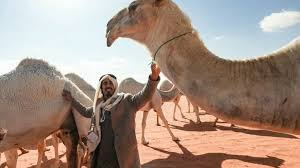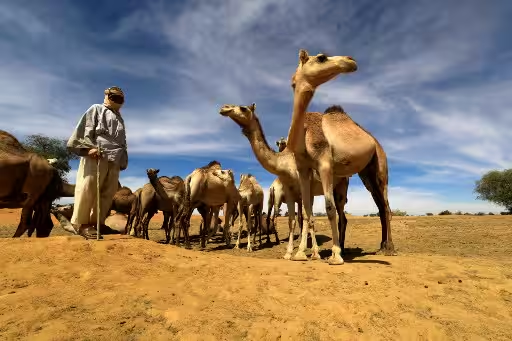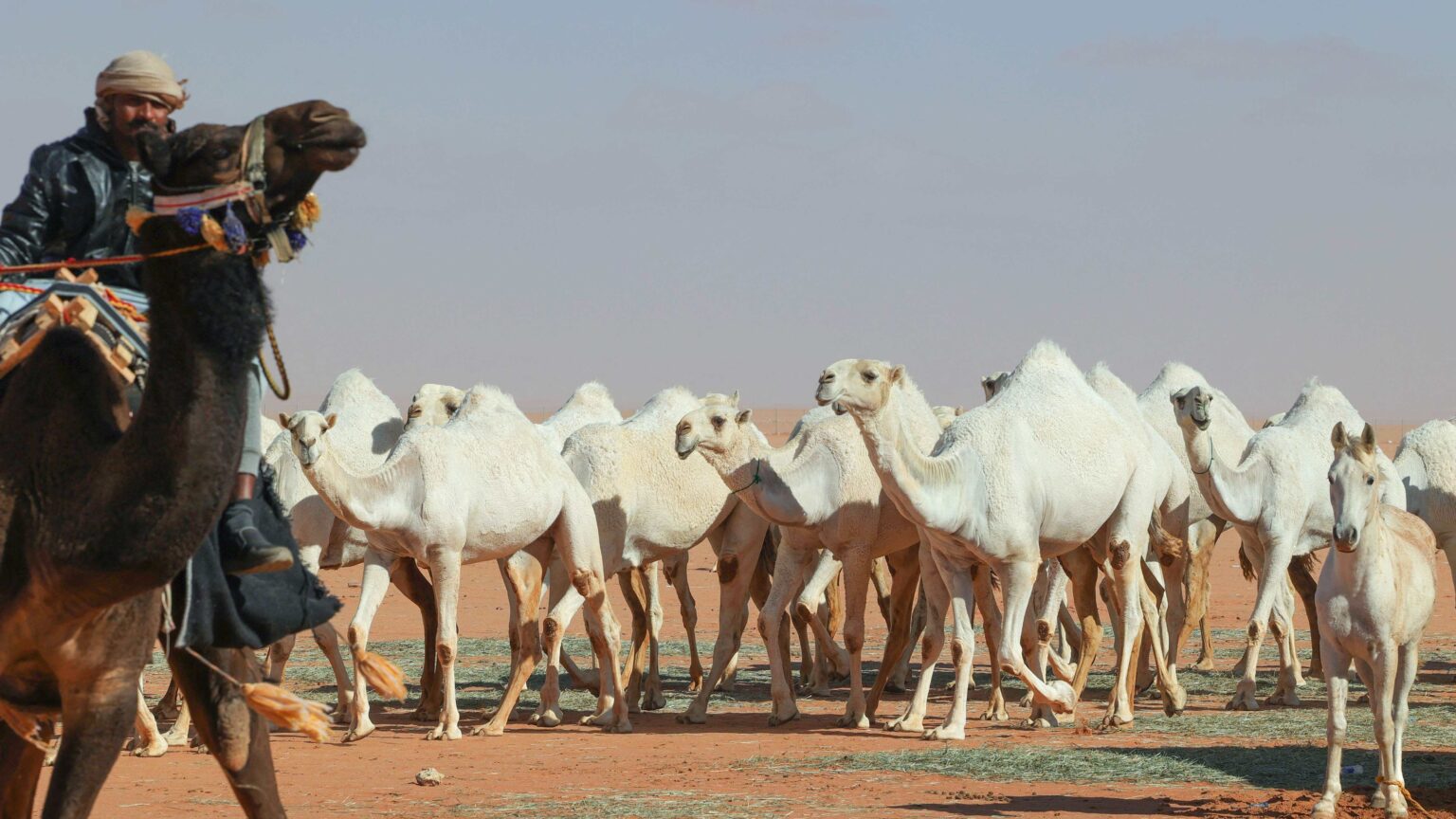In the vast deserts of Saudi Arabia, where the landscape stretches endlessly and the sun scorches the sand, camel herding has remained a timeless profession for generations. This age-old way of life, integral to the culture and economy, faces modern challenges ranging from harsh climatic conditions to dwindling grazing resources. Now, a team of Saudi researchers is bringing a revolutionary change by introducing an advanced AI system designed specifically to support camel herders in their daily work.
The new system integrates cutting-edge technology with traditional practices, creating a seamless bridge between the past and the future. By doing so, it aims to enhance the well-being of both camels and herders while ensuring sustainable practices in desert environments.
How AI Supports Herd Management
The AI system utilizes smart sensors and satellite data to monitor camel movements, health, and grazing patterns. It can detect early signs of illness, predict optimal grazing areas, and even provide real-time alerts during extreme weather conditions. For herders, who often traverse hundreds of kilometers each day, these insights are invaluable.
By applying artificial intelligence, researchers have developed predictive algorithms that learn from each herd’s behavior over time. This allows herders to anticipate potential problems, reduce camel mortality, and optimize resources in a way that was previously impossible. The system does not replace human knowledge but complements it, making traditional herding more efficient without compromising cultural practices.
Empowering Herders with Real-Time Insights
One of the most striking aspects of this AI system is its accessibility. Herders receive real-time updates on mobile devices, giving them the ability to make informed decisions instantly. Whether it’s finding water sources during dry seasons or avoiding dangerous terrain, the system acts as a digital guide across the desert’s vast expanses.
For many herders, this technology represents more than convenience; it is a lifeline. It reduces the physical strain and emotional stress associated with managing large herds in challenging environments. By empowering herders with knowledge, the system ensures that they can maintain their livelihoods more safely and efficiently.

Preserving Camel Health and Welfare
Camels are central to Saudi heritage, serving as a source of livelihood, food, and cultural identity. Ensuring their health is of paramount importance. The AI system continuously monitors vital signs and tracks feeding habits, alerting herders to potential health risks.
Early intervention can prevent diseases from spreading, reduce veterinary costs, and enhance the overall productivity of herds. This proactive approach marks a significant shift from reactive care to preventive management, offering camels a healthier, more secure life while strengthening herders’ bonds with their animals.
Bridging Tradition and Innovation
Despite its high-tech foundation, the system respects the traditional knowledge that herders bring from years of experience. The AI does not seek to replace human intuition but rather to augment it. By combining the wisdom of generations with modern data analytics, researchers have created a holistic tool that celebrates heritage while embracing progress.
Many herders initially approached the technology with skepticism. However, once they witnessed its practical benefits—such as predicting migration patterns, improving herd nutrition, and reducing losses—they began integrating it into their daily routines. This collaboration between humans and AI is a testament to how technology can enhance rather than disrupt cultural practices.
Supporting Sustainable Desert Practices
Sustainability is a core component of the AI system. By analyzing grazing patterns and vegetation availability, it helps herders make environmentally conscious decisions that prevent overgrazing and desert degradation.
This approach aligns with broader efforts to protect Saudi Arabia’s delicate ecosystems while maintaining the economic viability of camel herding. Herders can now manage resources more efficiently, ensuring that future generations can continue this important tradition without compromising the environment.
Education and Community Impact
Beyond practical support, the AI system is also shaping educational opportunities. Researchers are working closely with local communities to train herders on how to use the technology effectively. Workshops and digital tutorials ensure that even those unfamiliar with smartphones or AI can benefit from the system.
This knowledge transfer has strengthened communities by fostering a sense of empowerment and innovation. Young herders, in particular, are embracing the system, bridging the gap between traditional roles and modern technological skills.

Economic Advantages for Herders
The introduction of AI in camel herding also carries significant economic benefits. By reducing animal losses, optimizing grazing, and improving herd health, herders can increase productivity and income.
Additionally, data collected by the system can provide valuable insights for markets, enabling herders to make strategic decisions when selling livestock or products like camel milk and meat. This combination of technology and traditional business acumen is helping herders build more resilient and profitable operations.
A Model for Global Agriculture
Saudi Arabia’s AI system for camel herders is attracting attention beyond the region. Experts believe it could serve as a model for other pastoral communities worldwide, especially in areas facing similar environmental challenges.
By demonstrating how AI can support sustainable practices while respecting cultural heritage, Saudi researchers are paving the way for a new era in agriculture. This system shows that innovation does not have to come at the cost of tradition; instead, it can empower communities, preserve livelihoods, and promote ecological stewardship.
Challenges and Future Prospects
Like any technological innovation, the AI system faces challenges. Connectivity in remote desert areas, device maintenance, and adapting algorithms to diverse herding practices require ongoing attention.
However, researchers remain optimistic. Continuous improvements, feedback from herders, and government support are expected to address these hurdles. The long-term vision includes expanding the system to cover larger herds, integrating climate data, and even incorporating drone technology for aerial monitoring.
The ultimate goal is a fully integrated platform that provides comprehensive support to herders while preserving the rich cultural tapestry of camel rearing in Saudi Arabia.
A Human-Centered Technological Revolution
At its heart, the AI system is more than a technical tool; it is a human-centered innovation. It enhances lives, safeguards traditions, and strengthens the connection between herders and their camels.
By blending modern science with the enduring spirit of desert life, Saudi researchers have created a blueprint for progress that is compassionate, sustainable, and deeply respectful of human and animal welfare.
As camel herders continue to navigate the challenges of desert life, this AI system stands as a symbol of hope a powerful reminder that tradition and technology can move forward together, hand in hand.
Do follow Gulf Magazine on Instagram.
Also Read – Saudi Arabia’s Best QSR Team 2026: Top Contenders and Predictions



